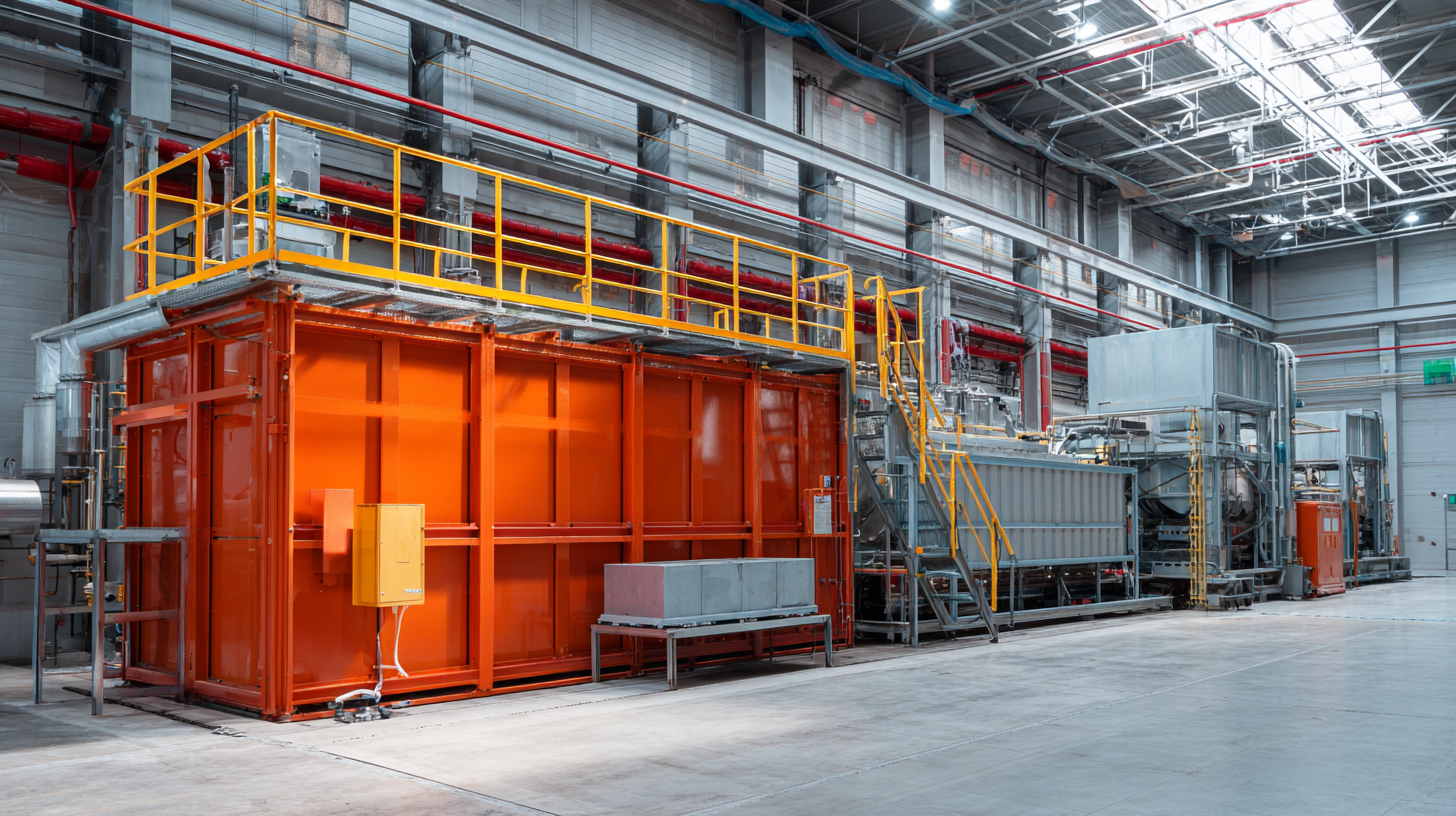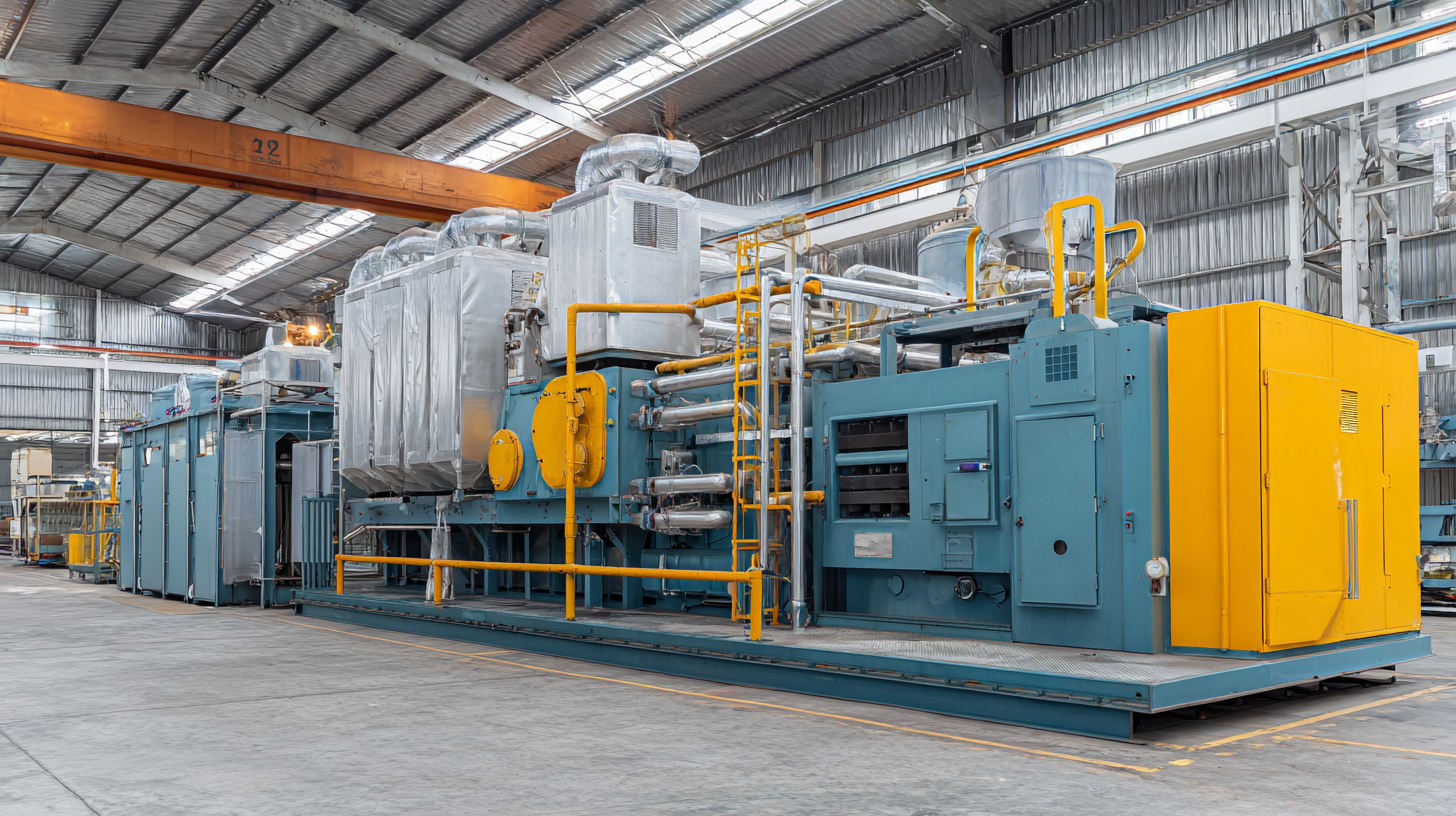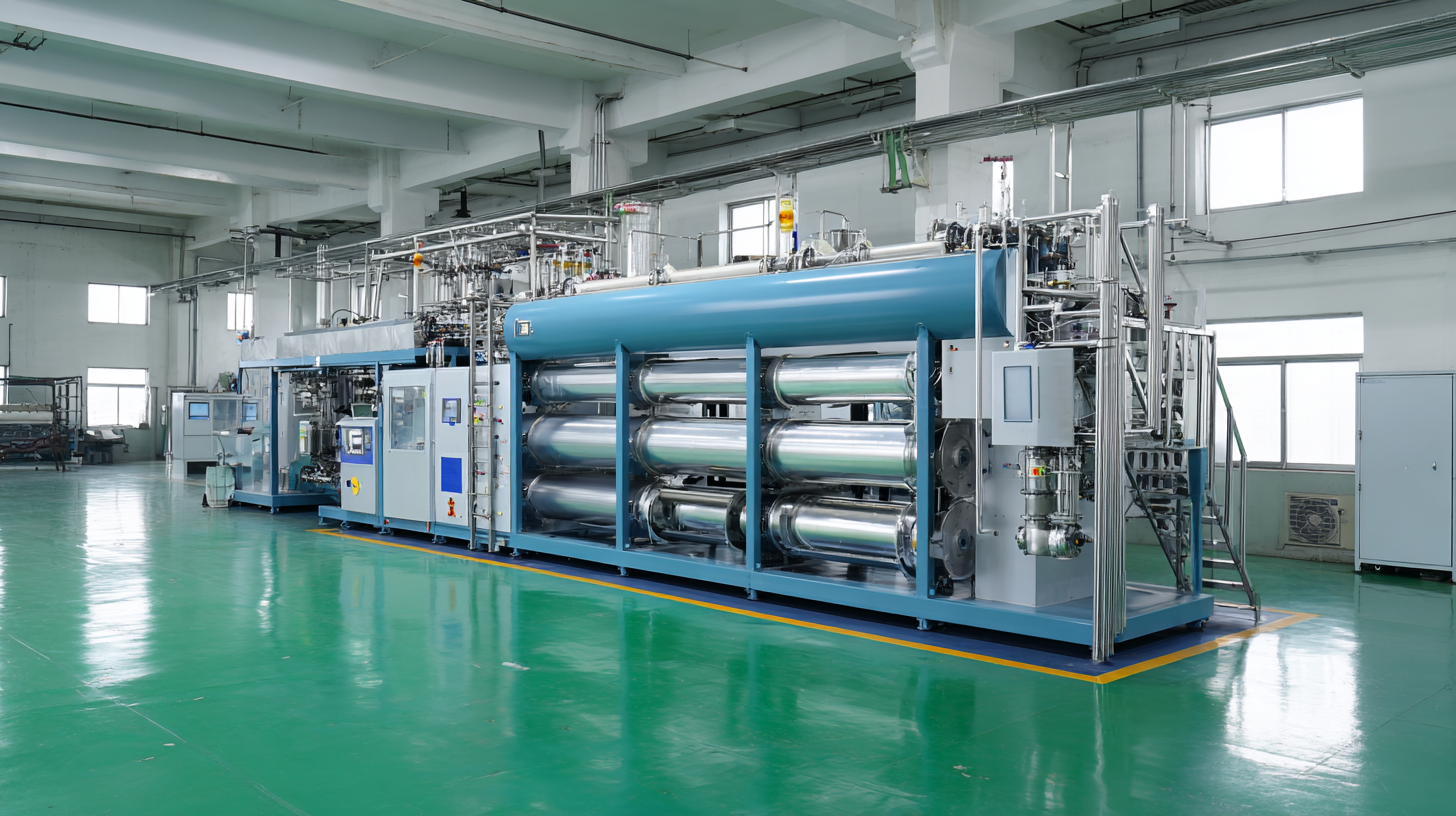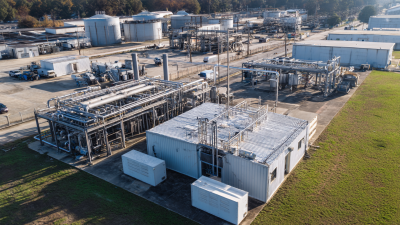In today's constantly changing manufacturing world, choosing the right tools and machines can really make a difference in how smoothly things run and how good the final product turns out. One piece of equipment that's super important is Resin Drying Equipment — it’s key to making sure your materials perform their best. Here at APEX Company, we focus on high-quality sludge drying and conveying systems, plus advanced wastewater treatment solutions to meet all kinds of industry needs. We've worked hard to build a solid reputation in China, and we're growing more and more on the global stage. As we dive into why investing in top-notch Resin Drying Equipment is such a smart move for your production, we’ll show how the latest tech and dependable solutions can boost your operations and help you succeed in the long run.

When it comes to making resin, the equipment used for drying really makes a big difference—not just in how efficiently everything runs, but also in the quality of the final product. I read somewhere that the global resin market is heading towards hit $500 billion by 2025, which pretty much shows how much demand there’s for high-performance materials these days. As manufacturers ramp up production, having reliable, top-notch drying tech becomes more important than ever. Skimping on good drying processes can be a big mistake, actually—moisture left behind can mess with the strength and performance of the finished resin, which is a no-go.
Investing in high-quality resin drying equipment isn’t just about getting rid of moisture; it also helps cut energy costs. The National Renewable Energy Laboratory has mentioned that by improving drying methods, energy use can drop by 30% or more, saving a decent amount on operating expenses. Plus, better drying tech makes the whole production line smoother and more efficient. And let’s not forget, it’s also a step toward being more sustainable because it cuts down on waste. For companies trying to stay ahead in a pretty competitive market, understanding just how crucial good drying equipment is can be the difference between just getting by and really excelling in quality and efficiency.
| Reason | Description | Impact on Production |
|---|---|---|
| Efficiency | High-quality resin drying equipment significantly speeds up production cycles. | Increased throughput and reduced lead times. |
| Consistency | Reliable drying processes ensure uniform material quality. | Minimized rework and waste, enhancing overall product quality. |
| Cost-Effectiveness | Investing in quality drying equipment saves on operating costs over time. | Lower overall production costs and improved profit margins. |
| Energy Efficiency | Modern equipment uses less energy without sacrificing performance. | Reduced energy bills and lower environmental impact. |
| Safety Features | Advanced drying equipment comes with enhanced safety protocols. | Decreased risk of accidents and improved workplace safety. |
| Scalability | Quality equipment can adapt to increasing production demands. | Easier expansion of production capabilities. |
| Technical Support | Top equipment providers offer robust support and training. | Quick resolutions to issues, minimizing downtime. |
When you're choosing high-performance resin drying equipment, it’s really important to keep in mind the key features that can actually make a difference in how efficiently things run and the quality of your products. I mean, the global market for engineering plastics is expected to jump from around $126.6 billion in 2024 to about $180.7 billion by 2031—that’s a pretty solid growth rate of about 5.2% annually. This pretty much shows there’s a growing demand for advanced drying solutions that can handle bigger production volumes, especially with the industry expanding like crazy.
And then there’s the Styrenic Block Copolymers (SBC) market, which is also on the rise—from $8.6 billion in 2024 to roughly $11.8 billion by 2032, growing at around 4.2% per year. So, with all this growth happening, the effectiveness of your resin drying system can really make or break your manufacturing results. That’s why it’s crucial to pick equipment that offers features like precise temperature control and efficient moisture removal. Paying attention to these little details can give your business a real edge, helping you keep up in a competitive, fast-changing market.
Getting the resin properly dried is a big deal if you want your finished products to be top-notch and consistent, especially in industries like automotive, aerospace, or electronics. I mean, there are reports out there that say if you don’t dry the resin correctly, you risk ending up with defects or uneven results—which can seriously mess with how well the product performs and how long it lasts. For instance, a study from the Polymer Processing Society pointed out that if the resin isn’t dried enough, defect rates can jump by as much as 30%. That’s not just a small hiccup—it can lead to major losses and customers ending up pretty disappointed.
When manufacturers use high-quality resin drying equipment, they can really get rid of that extra moisture effectively. This matters a lot because the moisture content actually affects the resin’s chemical qualities. According to the American Chemical Society, resins with more than 0.1% moisture tend to lose strength and don’t stick as well, which can cause failures, especially in tough, high-stress applications. By investing in better drying tech, companies don’t just improve the overall quality of their products—they also make sure they’re sticking to industry standards, which means safer, more reliable stuff for customers. Basically, putting effort into proper drying isn’t just about quality; it’s also about gaining a competitive edge as markets keep evolving—that’s the honest truth.
Proper resin drying significantly impacts production quality metrics. The chart demonstrates key performance indicators: a moisture content of 2%, high product consistency of 95%, efficiency nearing 85%, and a low defect rate of 5%. Choosing quality resin drying equipment enhances all these aspects.
When you're looking at resin drying in manufacturing, cost really matters if you want to save money in the long run. Using efficient drying methods can cut down on energy use quite a bit — which is a big part of how much it costs to run the whole operation. I came across a report from the National Association of Manufacturers that said about 30% of the energy used in industrial drying actually gets wasted thanks to inefficiencies. But here’s the good news: by choosing more advanced drying equipment that uses smarter technology, plants can slash their energy consumption by up to half. That’s a pretty huge saving over time.

Also, the way the resin gets dried affects not just costs, but the overall quality of the finished product. If the resin isn’t dried properly, you might end up with defects that lead to extra rework or even throwing things out — which can really add up cost-wise. According to the American Composites Manufacturers Association, these kinds of defects can eat up as much as 20% of total production costs. So, investing in top-quality drying equipment isn’t just about making sure the resin’s good — it’s also about keeping the production on schedule and boosting profitability in the long run.
When it comes to resin drying equipment, manufacturers are often faced with that classic dilemma: should they go for manual setups or invest in automated ones? I came across a recent industry report from the Resin Manufacturers Association that really highlights how automated drying systems can boost efficiency by up to 30% compared to manual methods. That’s a pretty big deal because not only does it speed things up, but it also helps ensure a more consistent quality in the final product—something super important when you're trying to stay competitive out there. Now, on the flip side, manual resin drying machines might seem a bit more budget-friendly upfront, but they tend to rack up higher labor costs and introduce more variability in drying times. A study from the Institute of Polymer Science points out that these inconsistencies can cause defects in roughly 15% of the items produced—ouch, that’s a lot of waste! Automated systems, on the other hand, use precise controls for temperature and humidity, which really helps cut down on those little errors and keeps the output reliable. If companies really want to boost their productivity, guarantee quality, and stay compliant with industry standards, investing in high-quality automated drying equipment could honestly be a game-changer for their production lines.
Now, on the flip side, manual resin drying machines might seem a bit more budget-friendly upfront, but they tend to rack up higher labor costs and introduce more variability in drying times. A study from the Institute of Polymer Science points out that these inconsistencies can cause defects in roughly 15% of the items produced—ouch, that’s a lot of waste! Automated systems, on the other hand, use precise controls for temperature and humidity, which really helps cut down on those little errors and keeps the output reliable. If companies really want to boost their productivity, guarantee quality, and stay compliant with industry standards, investing in high-quality automated drying equipment could honestly be a game-changer for their production lines.
When you're choosing resin drying equipment, it’s easy to fall into some common traps that can really mess with your production efficiency and quality. One big mistake a lot of folks make is not taking a close enough look at what their specific process needs. Every type of resin has its own unique drying requirements—based on what it’s made of and how it’s used—so understanding these details is super important to pick the right gear. Also, don’t forget to pay attention to who’s making the equipment. Overlooking the reputation and reliability of the manufacturer can cause headaches down the line.
Here’s a tip: start by doing a thorough review of your production setup and the types of resin you’ll be working with. That foundational knowledge will really help guide you toward the best equipment choices. It’s also a smart move to reach out to other companies or folks who’ve bought from your potential suppliers—hearing about their experiences and satisfaction levels can give you some really valuable insights.
Another common mistake? Ignoring energy efficiency and ongoing operational costs. Investing in high-quality drying equipment—like what’s offered by APEX Company—can really pay off because they focus on innovation and being eco-friendly. Make sure you look at the total cost of ownership—meaning maintenance, energy bills, and all that—so you don’t underestimate what’s involved in running the equipment smoothly over the long run.
: Quality resin drying equipment is crucial because it directly impacts production efficiency and product integrity. Poor drying processes can lead to moisture retention, compromising the final product's strength and performance.
Improving drying methods can reduce energy consumption by 30% or more, significantly lowering operating costs and enhancing energy efficiency in production.
Inadequate drying processes can lead to moisture retention in the final product, which can diminish its strength and performance characteristics.
Manufacturers should consider key features such as precise temperature control and efficient moisture removal capabilities, which directly impact production efficiency and product quality.
The global resin market is expected to reach $500 billion by 2025, indicating a growing demand for high-performance materials and effective drying solutions.
The engineering plastics market is expected to grow from $126.58 billion in 2024 to $180.69 billion by 2031, with a compound annual growth rate (CAGR) of 5.22%.
The SBC market is projected to rise from $8.58 billion in 2024 to approximately $11.80 billion by 2032, with a CAGR of 4.2%, highlighting the need for effective drying solutions to support this growth.
Investing in advanced drying solutions can streamline the production line, reduce energy consumption, minimize waste, and contribute to sustainable practices.
Advanced drying solutions can significantly influence manufacturing outcomes by improving production processes and maintaining product quality in a competitive market.
Businesses should prioritize quality resin drying equipment to achieve operational excellence, maintain product quality, and adapt to the challenges of a rapidly evolving market landscape.
Picking the right resin drying equipment might not sound like a huge deal, but trust me, it really is when you’re trying to optimize production and get top-notch product quality. Good quality systems do more than just dry efficiently—they help keep your final output consistent, which is a total lifesaver. When you're shopping around, keep an eye out for features like automation, energy efficiency, and reliability. These little things can save you a ton of money in the long run, believe me.
And honestly, understanding the difference between automated and manual drying systems can make your decision way easier. Sometimes going manual might seem tempting, but automation has its perks, especially if you want things to run smoothly and save on costs. Of course, it’s also about avoiding the common mistakes folks make when choosing this kind of equipment — you don’t want to throw your money away. Here at APEX Company, we’re pretty proud of our cutting-edge drying solutions. We aim to meet the high demands of different industries, making sure our clients see the savings and quality improvements they’re after in the long run.







